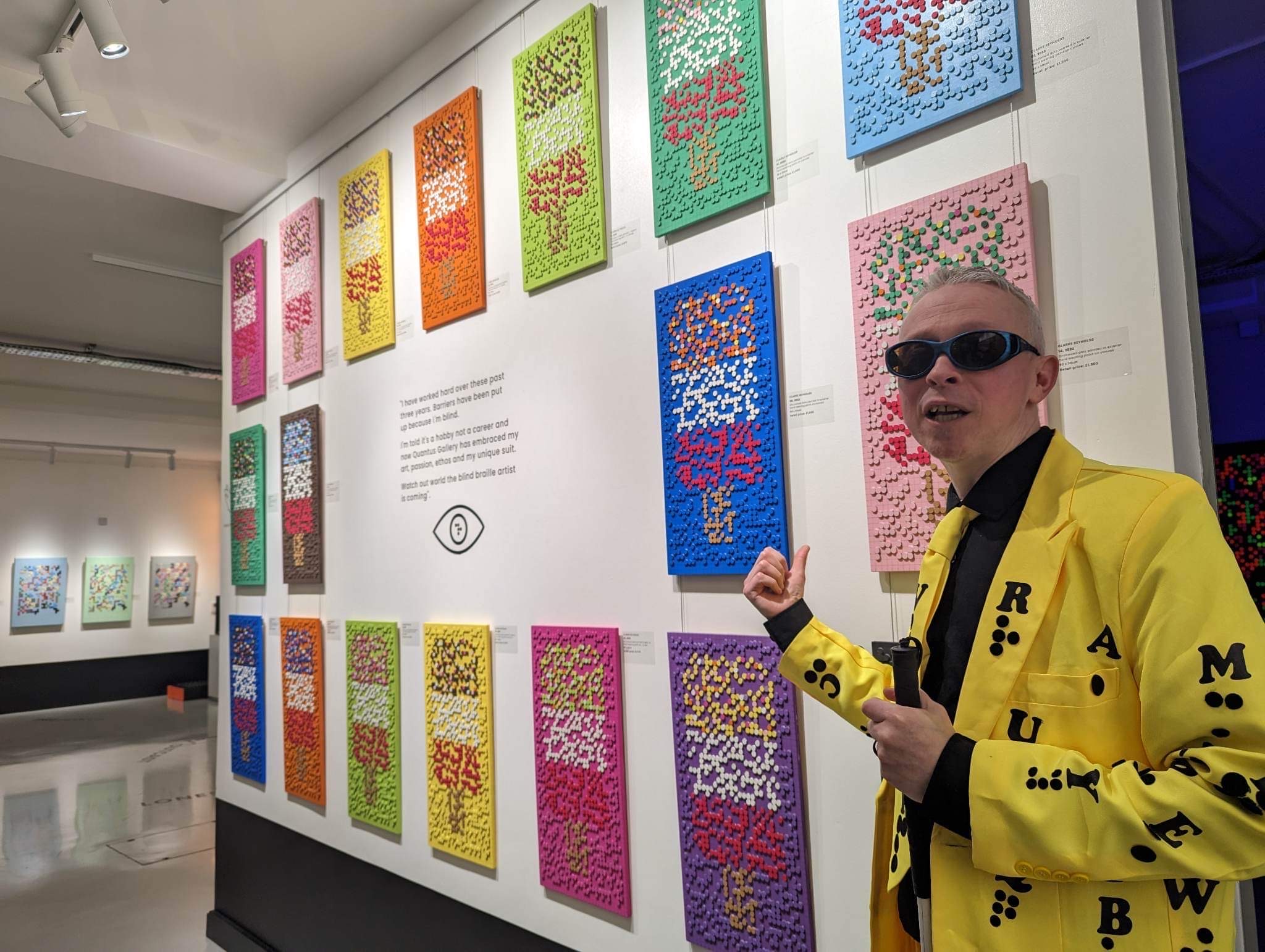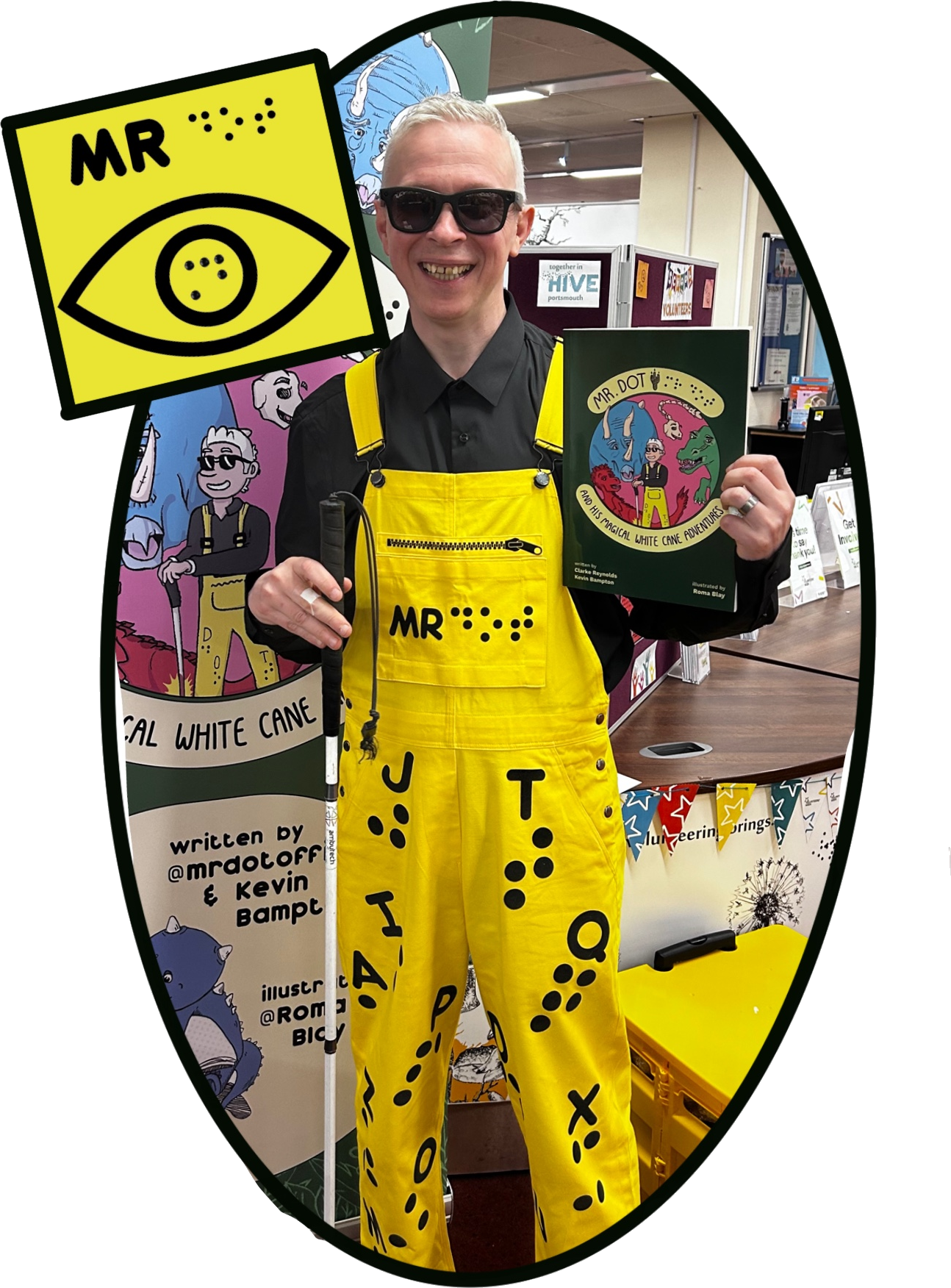
Clarke Reynolds “Mr Dot”
Mr Dot Origins
Clarke Reynolds was brought up in Portsmouth, England, with a passion for art that defied the challenges life presented. Diagnosed with deteriorating eyesight from a young age due to rod cone dystrophy, Clarke faced a world where sight was slowly slipping away. Despite this, art remained his constant — a creative lifeline that allowed him to express his experiences, emotions, and identity. He studied model making and design, originally envisioning a career in the creative industries before his sight loss accelerated.
As his vision changed, so did his perspective on creativity. Rather than seeing blindness as an end, Clarke saw it as a shift — a chance to reinvent how art could be experienced, not just seen. This realisation planted the seeds of his
The Development of Braille Art
Clarke’s work explores the intersection of visual art and tactile experience. Where most see Braille purely as a reading system for the blind, Clarke transforms these raised dots into vibrant, dynamic, and expressive works of art. Each piece combines colour, pattern, and texture, allowing both blind and sighted audiences to connect with the work on different sensory levels.
By bringing Braille into the gallery space, Clarke not only raises awareness about accessibility but challenges perceptions of what it means to “see” art. His art isn’t limited by canvas or frame — it’s a message, a statement that blindness can open new ways of storytelling.
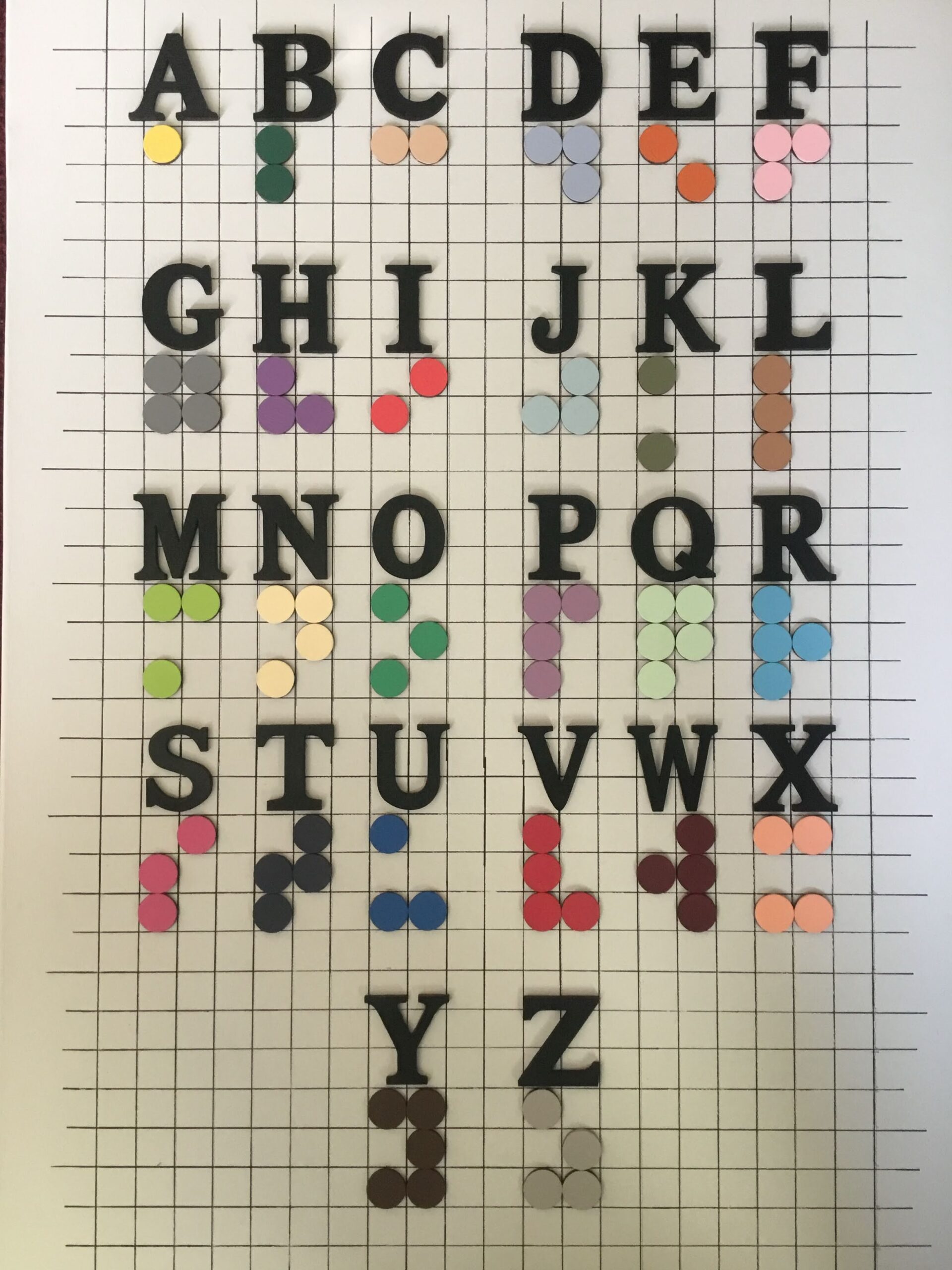
The Braille Alphabet

Philosophy and Mission
For Clarke, art is more than aesthetics — it’s advocacy. His mission is to create inclusive spaces where disability is not seen as a limitation but as a unique perspective. Through his work, Clarke challenges audiences to consider how art can be accessed, how communication can be expanded beyond sight, and how society can embrace diversity in all its forms.
As a blind artist, Clarke represents a powerful voice within the conversation about accessibility, representation, and inclusion in the arts. He uses his platform to educate, inspire, and dismantle the stigma surrounding disability.
Highlights & Achievements
Clarke’s work has been exhibited in galleries across the UK and internationally, captivating audiences with his bold use of colour and narrative. His innovative practice has earned him significant recognition, including:
- Becoming an Ambassador for Fight for Sight, helping raise awareness and funds for vision research.
- Patron for the charity VICTA
- Being named a finalist for the National Diversity Awards, which celebrate individuals who champion
inclusion. - Featuring in numerous interviews, podcasts, and media appearances that highlight both his personal journey and the wider importance of accessibility in the arts.
Clarke also actively engages with schools, organisations, and creative workshops, sharing his experience and encouraging others — both blind and sighted — to explore art as a tool for empowerment and expression.
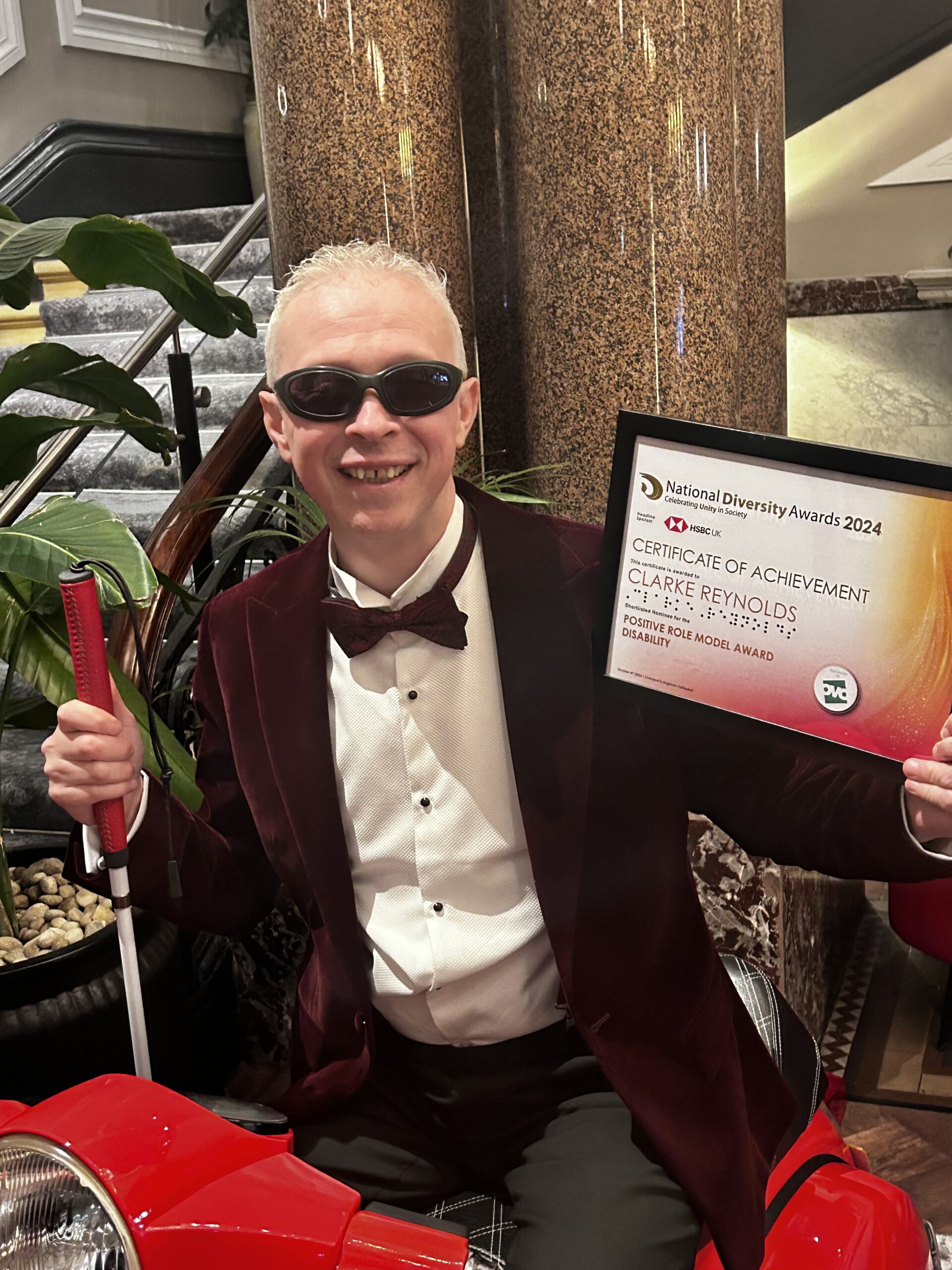
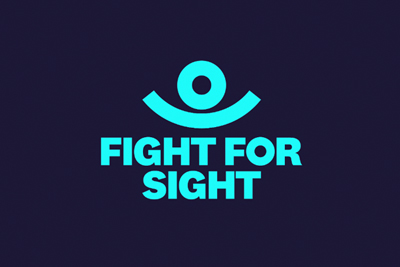

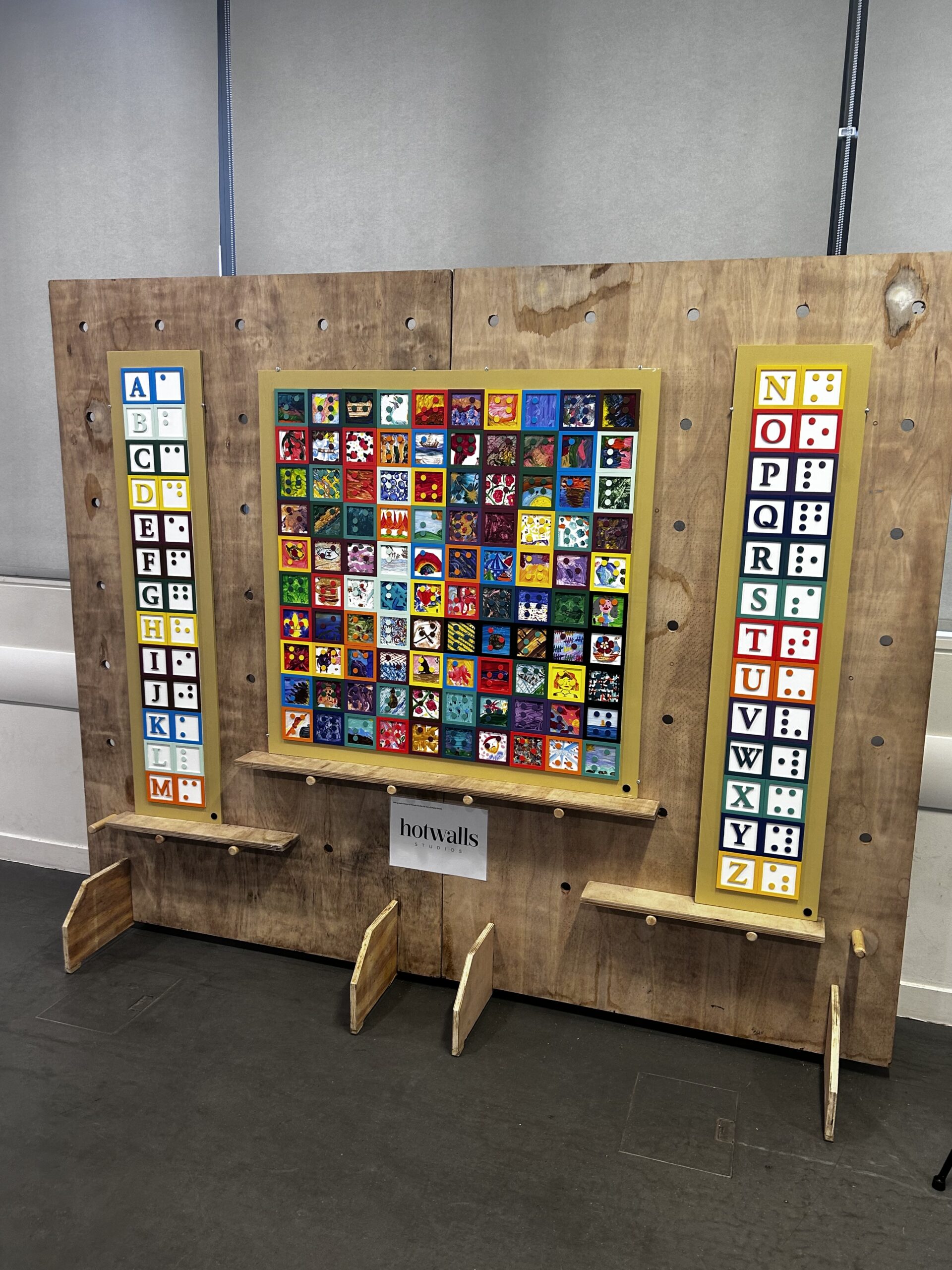
Beyond the Studio
Outside of his artistic career, Clarke is passionate about breaking down barriers for the visually impaired. He works with technology, education, and public engagement projects that promote inclusive design. His personal story serves as an example of resilience, adaptability, and the power of creativity to overcome adversity.
When he’s not in his studio, Clarke can often be found delivering talks, collaborating on projects that advance accessibility, or developing new ways to integrate Braille into public spaces and artistic environments.
The Future of Braille Art
Clarke’s vision is to see Braille art become recognised as a contemporary art form that belongs not only to the blind community but to everyone. He continues to experiment with new materials, collaborations, and platforms to push the boundaries of what tactile art can achieve. Each dot, each pattern, and each canvas tells a story — not only of
Clarke’s own journey but of the broader narrative of inclusion, representation, and creative possibility. “My art allows me to see the world in a way others may not — through touch, through story, through feeling. Blindness didn’t take my art away; it gave me a new way to share it.” — Clarke Reynolds
